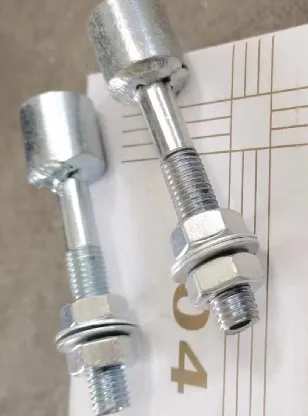loading...
- No. 9, Xingyuan South Street, Dongwaihuan Road, Zaoqiang County, Hengshui, Hebei, China
- admin@zjcomposites.com
- +86 15097380338
- Welcome to visit our website!
Exploring the Applications and Benefits of FRP Angle Bars in Construction
Exploring FRP Angle Bars Applications and Advantages
Fiber Reinforced Polymer (FRP) angle bars are revolutionizing the construction and engineering industries by providing an efficient and durable alternative to traditional materials. These angle bars, made from a composite of polymer matrices reinforced with fibers (such as glass, carbon, or aramid), are known for their incredible strength-to-weight ratio, resistance to corrosion, and versatility in a variety of applications. This article delves into the characteristics, benefits, and applications of FRP angle bars, showcasing why they have become an essential component in modern construction.
Characteristics of FRP Angle Bars
FRP angle bars exhibit several unique properties that distinguish them from conventional materials like steel or aluminum. One of the most notable characteristics is their lightweight nature. The reduced weight of FRP materials makes them easier to handle, transport, and install, which can significantly lower labor costs and enhance safety on construction sites.
Additionally, FRP angle bars are highly resistant to chemical and environmental degradation. Unlike metal components that can rust or corrode over time due to exposure to moisture, chemicals, or pollutants, FRP materials are impervious to such deterioration. This resistance makes FRP angle bars particularly suitable for use in harsh environments, including coastal areas, chemical processing plants, and wastewater treatment facilities.
Moreover, these angle bars exhibit excellent thermal and electrical insulation properties. This characteristic is particularly relevant in applications where electrical conductivity could pose a hazard or where temperature fluctuations need to be managed effectively.
Advantages of Using FRP Angle Bars
The advantages of selecting FRP angle bars over traditional materials are manifold. First and foremost is the reduction in maintenance costs. Since FRP is highly resistant to corrosion and weathering, structures using these materials require significantly less maintenance over their lifetime, leading to substantial cost savings.
frp angle bar

Another advantage lies in the sustainability aspect. As the construction industry increasingly prioritizes environmentally friendly practices, FRP materials stand out due to their lower carbon footprint during production and their recyclability at the end of their life cycle.
Furthermore, FRP angle bars can be fabricated to meet specific design requirements. Their versatility allows for customization in size, shape, and color, making them adaptable to various architectural aesthetics and functional needs.
Applications in Various Industries
FRP angle bars are used across a wide array of industries, highlighting their versatility and effectiveness. In the construction sector, they are commonly used in structural applications, including beams and frames, due to their high strength and lightweight properties. They can also be utilized in bridges, where reducing weight is crucial for overall structural integrity and longevity.
In the marine industry, FRP angle bars are often found in the construction of docks and piers, where their resistance to saltwater corrosion is particularly beneficial. Similarly, in transportation infrastructure, FRP materials can be used to create durable and lightweight components that contribute to improved performance and longevity.
The electrical sector also employs FRP angle bars in the construction of utility poles and telecommunication towers. Their insulating properties make them ideal for high-voltage applications, reducing the risk of electrical hazards.
Conclusion
In conclusion, FRP angle bars represent a significant advancement in material science, offering numerous advantages over traditional construction materials. Their lightweight, corrosion-resistant, and customizable nature makes them an ideal choice for a diverse range of applications across multiple industries. As the construction and engineering fields continue to evolve, FRP angle bars are set to play an increasingly vital role in building sustainable and durable structures, paving the way for a more resilient future. Whether for bridging the gap in infrastructure or reinforcing the foundations of modern buildings, FRP angle bars stand at the forefront of innovative engineering solutions.
-
Transform Your Spaces with FRP Grating SolutionsNewsNov.04,2024
-
The Versatility and Strength of FRP RodsNewsNov.04,2024
-
The Excellence of Fiberglass Water TanksNewsNov.04,2024
-
The Benefits of FRP Grating for Your ProjectsNewsNov.04,2024
-
Elevate Your Efficiency with FRP Pressure VesselsNewsNov.04,2024
-
Welcome to the World of FRP Pressure VesselsNewsOct.12,2024
-
Unveiling the Future of Filtration: Why FRP Filter Vessels are a Game ChangerNewsOct.12,2024
